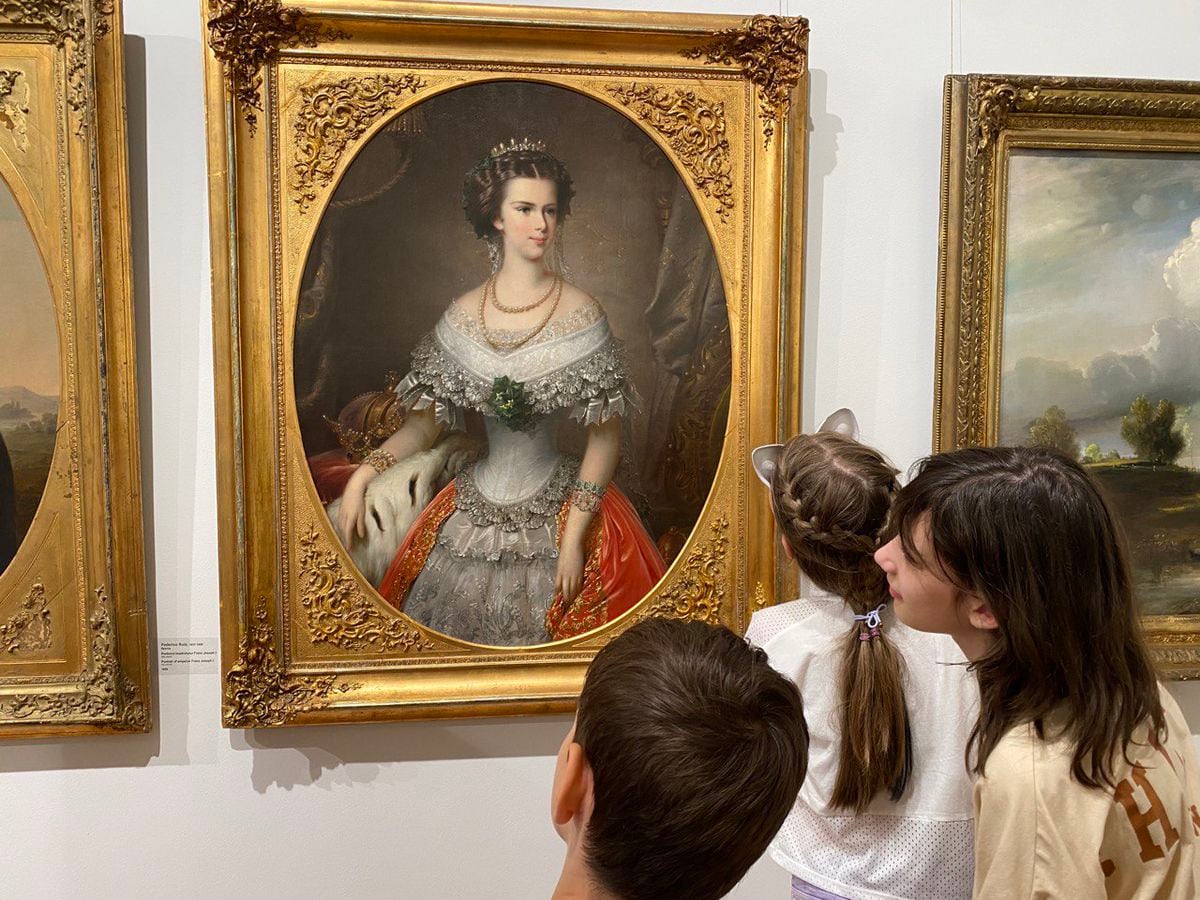The National Museum of Art of Moldova presented to society in 2018 the restoration of a unique painting. It was an enigmatic portrait of Elizabeth of Bavaria, better known as Sissi, Empress of Austria, which had been kept in a hidden recess of the gallery’s cellar since it arrived there in 1945, after the plunder perpetrated by the Stalinist army in the death rattles of World War II. On the canvas, which highlights the youth of the empress, adorned with solemn jewels and with a lost gaze, the name of its supposed author unexpectedly comes to view: Federico Ruiz, a painter and draftsman who was born in Madrid in 1837 and He died young, in 1868. Nothing is known about the circumstances under which this artist was able to paint the painting and his authorship is doubtful despite the fact that the museum’s cartouche attributes it to the Spaniard.
What is palpable is the impeccable aesthetic beauty of the canvas, whose protagonist appears surrounded by an aura that immediately awakens the interest of the viewer. The gaze goes to her before to her husband, Emperor Francisco José I, whose portrait accompanies Sissi in the same room on another canvas that the museum also attributes to Federico Ruiz and that has been exhibited there since the 1980s. Last century.
The painting suffered the war ups and downs of the 20th century. It belonged to Carol and Therese Flamman, a Romanian Jewish couple who donated it in 1941 to the Samuil and Eugenia Ionet Ethnographic Museum in the city of Radauti, a center founded by the couple in 1934 to collect works of popular art from Bucovina, a historically embedded region in the foothills of the Carpathian Mountains, currently separated between the provinces of Suceava (Romania) and Cernauti (Ukraine). “The painting of Empress Elizabeth of Austria is distinguished by a rare beauty and with a necklace and a diadem of extreme beauty,” wrote Samuil Ionet in an inventory that had not been dusted since the early 1990s, shortly after he was overthrown. the communist regime of Nicolae Ceausescu. “I knew the portrait existed, but I didn’t imagine it was so impressive,” says Ilie Oralian, manager of the Raudati museum, in a broken voice, who was unaware of its whereabouts and had never seen an image of the painting until now.
The collection of the Romanian museum reached its peak at the end of 1943, when it gathered more than 10,000 pieces, as well as 80 cabinets and display cases of great value, Oralian remarks, before explaining the subsequent vicissitudes of the collection: “This immense heritage was packed in the winter of 1944 and transported in four cars of a train to an unknown part of the great Soviet empire.” The National Museum of Art of Moldova, located in the heart of the capital, Chisinau, a territory that ended up under the control of Moscow, was also not spared from the expropriation of cultural property at that time. During the war, the art gallery’s works were loaded onto two wagons and sent to the Ukrainian city of Kharkiv, where they were safeguarded until the Russian offensive in Ukraine began two years ago.
The transfer of paintings from one place to another at that time caused the trace of some of them to be lost for several decades. It was not until well into the new millennium that the portrait of Sissi, the last empress of Europe, the consort of Austria and Hungary who came to the throne by surprise, signed by Federico Ruiz in 1856, was rescued from its long slumber. inventory record, the painting arrived at the Moldovan Art Museum in 1945, after being transferred from the Radauti Museum,” explains Natalia Golenco, who was in charge of unearthing and restoring the painting, together with Anatol Puha and Gheorghe Nicolaescu, who rehabilitated the delicate and damaged fabric. Both Golenco and Nicolaescu avoid using the term “spoliate,” which shows the influence that Russia still exerts over this Eastern European country.
The youth of the Spanish illustrator, who became a student at the Royal Academy of Fine Arts of San Fernando, raises suspicions that he is really the author of the work. “At the time the painting was painted he was the same age as the empress: 19 years old,” Golenco points out. “Could he appear before the court at such a young age and obtain an order to paint the portraits of the new emperors?” asks the Moldovan conservative, who questions the authorship, since Sissi did not visit Spain that year and Federico Ruiz had just finished his studies.
According to the Prado Museum, the painter’s precarious economic situation led him to publish numerous drawings from a very young age in various newspapers of the time, such as Illustration, The Picturesque Weekly, The Illustrated Newspaper, Everyone’s reading and the Museo Universal. In his extensive production, the works stand out Rome in the hundred of Saint Peter y Workers at sea. However, the Spanish art gallery only has one oil painting registered, with which he participated in the National Exhibition of 1856, precisely the same year in which he supposedly portrayed the Empress of Austria.
For Pedro José Martínez, curator of 19th century paintings at the Prado Museum, the painting was painted by the Austrian Franz Russ I, the old (1817-1892), whose signature (F. Ruz) can be confused with that of Federico Ruiz. “It is a replica, a copy made by the same artist who made the original,” says the Prado specialist after reviewing the signature and comparing the canvas with others by the Central European artist.
Experts also believe that the paintings of Sissi and Francis I of Austria are by the same author due to the treatment of the chromatic layer, the way of painting individual details and the date of their creation. “The husband’s one also aims to be a replica, although it is not signed, since sometimes the artists only put their personal mark on one,” Martínez emphasizes.
